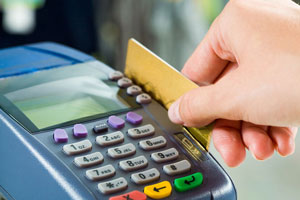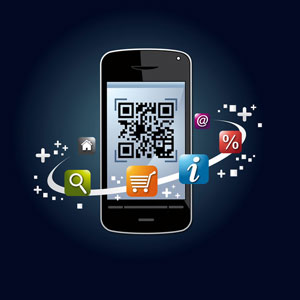••• consumer psychology
Paying with plastic makes consumers feel falsely flush
It’s a basic checkout question: Cash or credit? But did you know that answering one way or another could impact your bottom line? Research from Promothesh Chatterjee, assistant professor of marketing at the University of Kansas, Lawrence, Kan., lends credibility to the notion that consumers assess purchases differently depending on payment method.
People who reach first for a credit card concentrate on benefits of the purchased item, such as the improved image from a new television or the comfortable texture of new clothes. Shoppers who pay with cash are more likely to focus on the item’s cost, including warranty costs, installation fees and delivery time. Studies Chatterjee carried out with colleague Randall Rose of the University of South Carolina, Columbia, S.C., were designed to explore whether consumer perception of products was altered by form of payment. Their study is scheduled to be published in the Journal of Consumer Research this year.
Studies Chatterjee carried out with colleague Randall Rose of the University of South Carolina, Columbia, S.C., were designed to explore whether consumer perception of products was altered by form of payment. Their study is scheduled to be published in the Journal of Consumer Research this year.
Previous marketing research demonstrated consumers were willing to pay more when they used credit cards rather than cash. In a series of four experiments involving more than 500 participants, Rose and Chatterjee found that consumers who had been primed to think first of a credit card as the payment mechanism made more recall errors regarding aspects of a product’s cost than they did when recalling benefits of the items.
Chatterjee said their research suggests consumer education programs may need to address marketers’ steady reinforcement of credit cards as a payment option because the method likely compels people to purchase goods and services not appropriately aligned with actual needs. In addition, the study could have implications for government welfare agencies that distribute payments on prepaid debit cards.
••• mobile research
QR codes lost on even the savviest
 You might think that if anyone would know how to use a QR code, it would be college students, but data from Lincoln, Neb., research company Archrival showed that although 80 percent of students owned a smartphone and had previously seen a QR code, only 21 percent of students were able to successfully scan the QR code example. Furthermore, about 75 percent said they were unlikely to scan a QR code in the future.
You might think that if anyone would know how to use a QR code, it would be college students, but data from Lincoln, Neb., research company Archrival showed that although 80 percent of students owned a smartphone and had previously seen a QR code, only 21 percent of students were able to successfully scan the QR code example. Furthermore, about 75 percent said they were unlikely to scan a QR code in the future.
Why the discrepancy? “Students simply struggled with the process,” said Don Aguirre, brand manager at Archrival. “Some didn’t know a third-party app was needed [to scan the QR code]. Many mistakenly assumed it could be activated with their camera. And others just lost interest, saying the activity took too long.”
In her December 9, 2011, article “Why QR codes aren’t catching on,” for CNN.com, Amy Gahran argues that there are several flaws with the QR system, beginning with needing a smartphone with a barcode scanner app installed. Once properly equipped, consumers must then be willing to take a moment to find and launch that app before pointing the smartphone’s camera at a QR code.
Even then, it’s a gamble whether the landing page will be useful, interesting, relevant or even mobile-optimized, as some QR codes have been known to spread malware and phishing scams.
